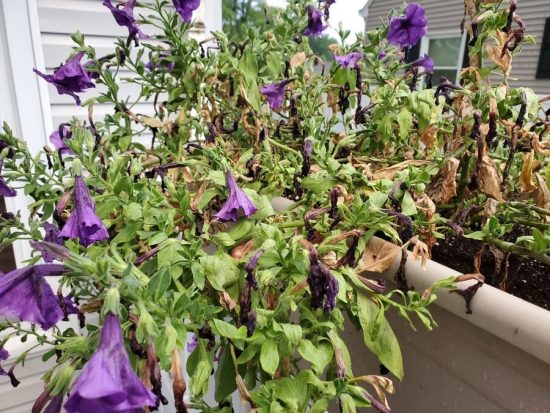Have you ever wondered What Would Happen If You Won’t Water Plants for 10 Days? Would they die or survive? Find out!
What Would Happen If You Won’t Water Plants for 10 Days? This isn’t your everyday gardening advice; this is an in-depth insight into plant physiology and exploring the outcomes.
Here are the best watering rules to follow
What Would Happen If You Won’t Water Plants for 10 Days
The Immediate Impact: Days 1-3
Cellular Dehydration
Within the first one to three days, the cells begin to lose their turgor pressure (plant’s version of blood pressure), which is essentially due to the lack of water. This takes away the rigidity from the stems of the plant, resulting in drooping leaves.
Stomatal Shutdown
Stomata are the plant’s pores, facilitating gas exchange. To conserve water, these pores close, minimizing transpiration and affecting photosynthesis.
The Midway Crisis: Days 4-6
Nutrient Imbalance
In the plant kingdom, water is the transporter of essential nutrients from the soil to the cells. These nutrients can’t reach their intended destination without water, leading to deficiencies.
Reduced Growth and Flowering
By the end of the 4th and 6th day of the plant not receiving water, it goes into a survival mode. Energy, which is typically designated for growth and flowering, is now used by the plant to sustain vital functions and survive.
Pour Water Over Crushed Garlic, then Spray it on Your Plants
The Critical Phase: Days 7-10

Irreversible Damage
By this stage, prolonged dehydration and a severe lack of water can result in irreversible cellular damage. The plant may lose its leaves or experience root die-back.
Ethylene Production
The stress hormone ethylene increases, further accelerating leaf drop and possibly leading to the death of the plant.
What Happens Next?
If the plant survives this ordeal of no water for 10 days, it will then require careful rehydration and nutrient replenishment. A sudden influx of water could shock the system, causing root rot.
- For severely dehydrated plants, place the pot in a basin filled with water for 30 minutes to an hour to allow the soil to soak up moisture. Then, allow it to drain thoroughly.
- Misting the leaves lightly can help raise the humidity around the plant, aiding in its recovery.
Survival Chances
How the plants cope with this, mainly depends on the types you have in your collection. Choosing the right plants based on your watering schedule can significantly affect their health and survival.
Succulents and cacti can take periods of drought like champs, but specimens like ferns and peace lilies may not fare well without regular watering.
How To Water Plants + 5 Watering Mistakes You’re Doing
Indoor vs. Outdoor Plants
The effects of not watering a plant for 10 days can vary greatly depending on the environmental conditions where it’s placed.
- Indoor plants are usually in a more controlled environment, so they may not dry out as quickly. They are protected from strong winds and direct sunlight, which reduces the rate of transpiration—the process by which water is lost through plant leaves.
- Outdoor plants are exposed to wind and sun, which can rapidly deplete moisture from the soil. Lack of water for 10 days can lead to irreversible damage, particularly during hot weather.
Conclusion
A 10-day absence of water triggers a cascade of physiological changes, from cellular dehydration to potentially irreversible damage. Understanding these mechanisms is more than a cautionary tale—it’s an exploration into our leafy companions’ remarkable resilience and vulnerability.
Do remember that as a plant parent, it is your duty to duly take care of your green friends, no matter how caught up you are in life.



